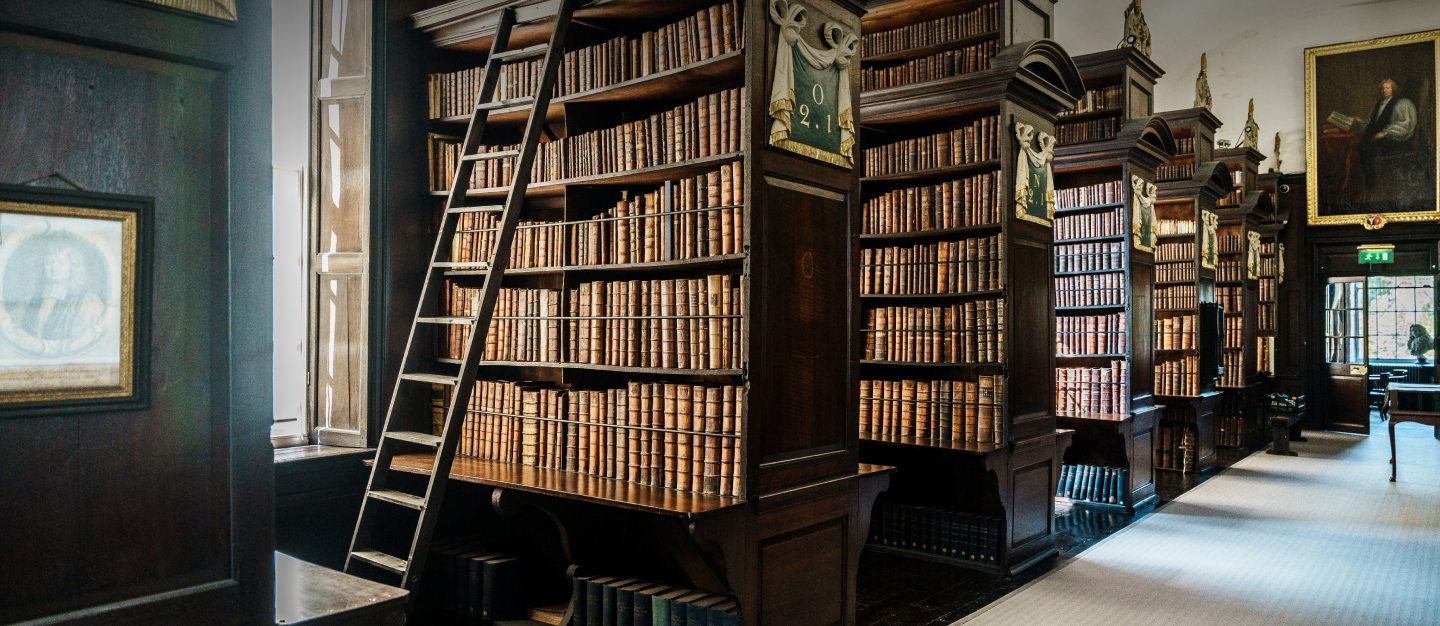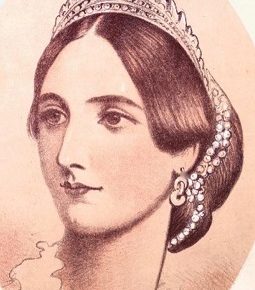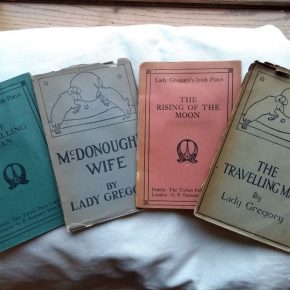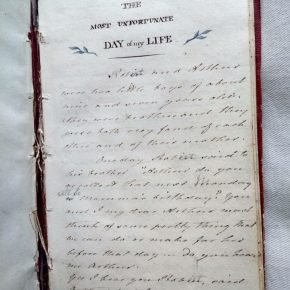
Women in the Benjamin Iveagh Library
Dr Nora Moroney tells us of some exciting finds in our library at Farmleigh House.
The Benjamin Iveagh Library contains over 5,000 books in its beautiful wood-panelled room at Farmleigh House in the Phoenix Park.

Lady Jane Wilde, 1885.
Only a handful were written by women. This is not altogether surprising as women have traditionally been under-represented in literary history. They are also less likely to have been published in expensive bindings, the kind collected by Benjamin Iveagh.
The seven women who do feature on the shelves are an interesting group: Lady Jane ‘Speranza’ Wilde, Lady Gregory, Lady Morgan, the Countess of Blessington, Maria Edgeworth, OE Somerville and Violet Florence Martin (aka Martin Ross). Their elite status in Ireland’s literary culture is mirrored by their elevated standing in the Anglo-Irish milieu so familiar to Iveagh and earlier generations of the Guinness family.
The most recognisable names in the collection are perhaps Wilde and Gregory. Jane Wilde is today best known as the mother of Oscar but was a respected author in her own right. Her Ancient cures, charms and usages of Ireland (1890) reflects her interest in folklore and fairy tales.

First editions of Lady Gregory’s plays.
Lady Gregory was a central figure in the early 20th century Irish Revival, and her drama and poetry are jewels of the collection. Her plays (such as McDonough’s Wife) draw on the folklore of rural Ireland and became core themes of the early days of the Abbey theatre.
Lady Morgan and the Countess of Blessington were two of the 19th century’s most celebrated female writers. Morgan’s The Wild Irish Girl (1806) is widely seen as the original ‘National Tale’ – packaging Ireland and its culture for an English audience. Blessington, too, used her Irish charm to build a successful and well-travelled career, mixing with figures like Charles Dickens and publishing Conversations with Lord Byron in 1834.
Bookending this group are Maria Edgeworth (1767-1849) and Somerville and Ross. Edgeworth was one of the earliest Irish women writers to find widespread fame, with books such as Castle Rackrent and The Most Unfortunate Day of My Life.

Original manuscript by Maria Edgeworth.
A century later, Somerville and Ross had a similarly long and successful career. Following on from The Real Charlotte (1894), they published over fifteen novels and memoirs about Irish life. Their entire collected works are shelved together in the library alongside manuscripts and letters detailing their literary lives.

A fine binding by Norah Fitzpatrick.
Women also occur in rather unexpected places in this collection – the bindings. Benjamin Iveagh collected many editions from the Dun Emer and Cuala Press: early twentieth-century publishing houses set up by the Yeats sisters and run almost entirely by women.
They were celebrated for their ornate, hand-printed publications and often signed their names inside the covers. A fine example of this is a red and gold embossed binding by Norah Fitzpatrick of The French under the Merovingians (1850) (see right).
As these works show, women do exist in this largely male collection and by paying close attention we can trace their influence across Ireland’s literary history, from the early Romantic era to the height of the Celtic Revival.
Dr Nora Moroney of the School of English at TCD is a post-doctoral researcher on an Irish Research Council (IRC) Enterprise Partnership Scheme. Her project is entitled ‘The Benjamin Iveagh Library: A Cultural History of Collecting in Twentieth-Century Ireland’.






